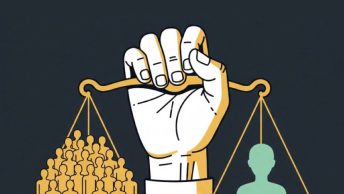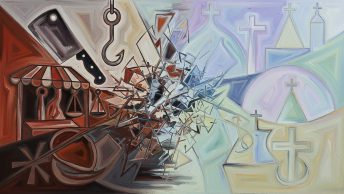The Governor of Uttar Pradesh (“UP”) promulgated Uttar Pradesh Temporary Exemption from Certain Labour Laws Ordinance, 2020 (“Ordinance”) which suspended all labours laws within the territory of UP for a period of three years. Under this, three labour laws have been exempted viz, the Building and Other Construction Workers Act, 1996, the Workmen Compensation Act, 1923, and the Bonded Labour System (Abolition) Act, 1976. Section 5 of the Payment of Wages Act, 1936, which provides for timely payment of wages, will continue to remain in force. The Ordinance also exempts provisions relating to the employment of children and women, and provisions for compensation for death/accident during the course of employment under Employees Compensation Act, 1923. The Government of UP claimed that this step was necessary as COVID-19 has slowed industrial activity and relaxation of labour laws is necessary to revive the economy.
The exemption from Minimum Wages Act, 1948 will result in exploitation of workers. The maximum work hours has been increased from 9 to 12 hours per day. Moreover, as a result of the suspension of Factories Act, 1948 and Uttar Pradesh Shops Establishment Act, 1962, the employers would no longer be required to pay wages for overtime. Although, the Ordinance mentions that a minimum wage will be notified by the Government of UP in the future. The Ordinance also suspended the Equal Remuneration Act, 1976 and Industrial Disputes Act, 1947 which gives the employer a free hand to discriminate against women and lay off workers without complying with standard norms respectively.
Suspension of Trade Union Act, 1926 has led to a three-year temporary suspension of traditional rights of the trade union like the worker’s right to strike and collective bargaining. Prof. S. Dam has argued, ordinances from 1952-2009 were promulgated on a number of subject matters, however, ordinances relating to labour laws (49) were relatively less in number when compared with administrative (198) or finance (107).
He also noted that this is a recent trend with almost 20 ordinances being promulgated in the 1990s. Interestingly, the first-ever Ordinance relating to labour laws was the first-ever Ordinance to be withdrawn, the Essential Services Maintenance Ordinance, 1957 (“ESMO”). ESMO was promulgated to prevent employees in the certain sector to go on strike, however, the Ordinance was called off after negotiations by the trade union. This instance sheds light on the importance of trade unions and the implications of suspension of the Trade Union Act, 1926. Considering the gravity of the step, it becomes pertinent to examine the constitutional validity of the ‘Ordinance’.
Part I: Ordinance Making Power
The power of the Governor to promulgate Ordinance flows from Article 213 of the Constitution. There are two pre-conditions attached to promulgation, these are a) at least one house should not be in session, and b) the Governor is satisfied that necessary conditions exist for her to take necessary action. The existence of a necessary condition in the present case is a dubious claim. The Ordinance was promulgated in the first week of May 2020, during this period apart from essential commodities any other economic activity was prohibited due to nationwide lockdown. There cannot be a necessary condition to reform labour laws when economic activity is prohibited. If there does not exist a necessary condition after lockdown, the Ordinance could have been tabled as a bill before the legislature of the state as and when it returned to function. Considering that an alternative was available, the promulgation of an Ordinance amounts to by-passing the legislature.
However, the scope of judicial review in Ordinance making power is narrow as the Governor’s satisfaction is held to be a subjective satisfaction. Thus, it becomes imperative to discuss the nature of the Ordinance making power. Professor K. T. Shah while discussing Article 102 of the draft constitution argued (¶ 8.89.59) ‘that any power that the Head of the State may exercise should of ‘executive nature’ and are ‘extraordinary’. This ‘extraordinar’ power might take the form of legislation but should not be legislative ‘per se’.
The proposed amendment was not passed on grounds that a holistic reading of Article 102 makes it clear that is an extraordinary power. Thus, it is clear that these legislative powers exercised by the executive head are extraordinary as well as limited in nature. Now, it is a fundamental concept that the legislature has a plenary power to make/amend/repeal laws, including suspension of laws. Since the legislative power of the President as intended by the framers of the Constitution is interpreted as an extraordinary power, the question is whether this power will be a plenary power comparable to the power of the legislature.
This question has been answered in negative by Justice D. Y. Chandrachud in Krishna Kumar v. State of Bihar (¶ 57) – “the considerations which govern law making by a competent legislature which has plenary powers to enact a law cannot be equated with a temporary enactment.” He further observed that if ordinance making power (executive in nature) is equated and put on the same pedestal as plenary power of the parliament, it will undermine the supremacy of the Parliament.
It is also pertinent to note that in pith and substance the power exercised by the President/Governor is of executive character (as stated above). Furthermore, the executive government cannot go against the provisions of the Constitution or any other law. This is the twin test which should be adopted here considering the intention of the framers of the Constitution. Thus, an Ordinance can certainly make laws or amend it without going against the object of the law. However, an ordinance cannot be used to carry out en masse repeal or suspension of existing central law. Considering the nature of Ordinance making power, repeal or suspension of existing state law can be questioned as well.
In addition to this, the Supreme Court has held in the Krishna Kumar Case that Ordinances cannot create enduring or lasting rights and are temporal in nature. They subsist till the assembly/legislature is in session. Thus, an Ordinance authorizing suspension of labour laws for three years is against the constitutional scheme and outside the purview of Article 213. Lastly, Justice V Gopala Gowda remarked– Ordinance on a law which requires the assent of the President cannot be promulgated by the Governor without instructions of the President, this is what the bare reading of the Article suggests.
Part II: Violation of Fundamental Rights
Labour rights are read into Article 21 of the Constitution as unenumerated fundamental rights through interpretation by the Supreme Court. For instance, in Bandhua Mukti Morcha v Union of India, the court stated that right to live with human dignity must include protection of the health and strength of workers, men and women, and of the tender age of children against abuse, just and humane conditions of work and maternity relief and so on. Justice P.N. Bhagwati in PUDR v Union of India observed that if a worker working at a wage less than a minimum wage, then it can be legitimately presumed that he is working under force or compulsion. This force or compulsion is prohibited by Article 23 which guarantees a right against traffic in human beings and forced labour.
These requirements are held to be basic, minimum and essential requirements. In accordance with Bandhua Mukti Morcha, actions of the central government or state government which violates or takes away these requirements would not stand the scrutiny of the court. It has been argued that the suspension of labour laws will render the economic power exercised by the capital unchecked and thereby leading to exploitation of the workers. En masse suspension of labour is an act by the state which directly infringes upon these rights.
Dr Ambedkar was a strong and ardent promoter of worker’s rights, this is evident from the directive principles of state policy (Article(s) 39, 41, 42 and 43 which expect the state to ensure the right to work, just and human conditions of work and even living wage), Justice Bhagwati regarded these principles as life-breath of labour rights under Article 21. Thus his philosophy and reasoning can be used a linchpin in the interpretation of labour rights. Advocate and noted scholar Gautam Bhatia has argued that when it comes to forced labour, the understanding of force and freedom must be connected with power, economic as well as social. Bhatia has argued for an Ambedkarite approach in public as well as the private sphere.
However, there exist some lacunae with respect to the rights of trade unions. In All India Bank Employees v National Industrial Tribunal, the Supreme Court observed that right to form unions or associations enshrined under Article 19(1)(c) does not extend to the right to form trade unions. It is not clear whether the term ‘union’ would extend to trade unions or not. Consequently, the judgment states that any infringement on rights of the trade unions, including the right to collective bargaining or right to strike, would not be tested on the touchstone of clause (4) of Article 19 but on other considerations. In light of suspension of the Trade Union Act, 1926 by the Ordinance, the labours are deprived of a formal body, which had substantial say which is evident from ESMO’s withdrawal, to represent their interests.
Furthermore, these steps, inter alia, are a blatant violation of International Labour Organisation (“ILO”) Convention 87which protects right to freedom of association; Convention 98 which protects right to collection bargaining and flouts the universally accepted principle of eight hour working day, though restrictions can be placed as per Convention 116. Unfortunately, a country which envisions and endeavours to secure a living wage for workers now stands in violation of ILO Convention 26 and Convention 131 which aim to guarantee minimum wage. Moreover, Convention 205 mandates the states to ensure international labour stands, rule of law and human right even in times of crisis.
The Way Forward-
The Ordinance passed by the Government of UP for the reasons stated above is against the constitutional scheme on procedural as well as substantive grounds. The Ordinance is already challenged in Allahabad High Court. The governments should consider that situations like COVID-19 can be better dealt with by creating or strengthening rights and not by repealing or relaxing the existing laws. The policy must be framed after considering the possibility of exploitation of the labours at the hands of the capitalist. If at all relaxing labour laws facilitate economic growth, some relaxations are permissible but en masse suspension of laws is against the mandate of the constitution. Assuming that the en masse suspension is within the constitutional framework, the route of the Ordinance certainly runs afoul of the constitution. Lastly, the court must reconsider and widen the interpretation given in All India Bank Employees case to cover trade unions within Article 19.








[…] subjective satisfaction is minimal, the abuse of power becomes easier. Writing for Law and Other Things, I have argued how the Uttar Pradesh Temporary Exemption from Certain Labour Laws Ordinance, 2020 […]
[…] subjective satisfaction is minimal, the abuse of power becomes easier. Writing for Law and Other Things, I have argued how the Uttar Pradesh Temporary Exemption from Certain Labour Laws Ordinance, 2020 […]
Thanks for sharing. I read many of your blog posts, cool, your blog is very good. https://accounts.binance.com/register?ref=P9L9FQKY